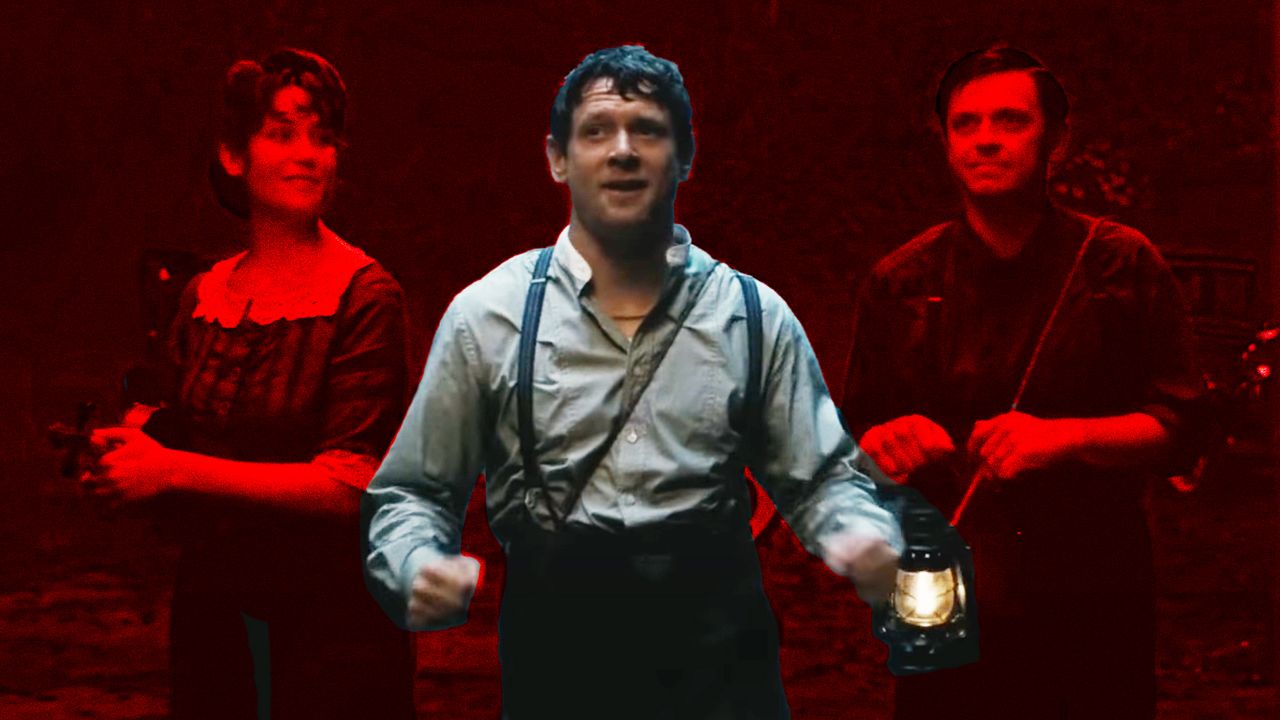The discussion revolves around the challenges of portraying Remmick, a character with unique features, including half a guitar attached to his face, emphasizing the use of magnets and practical effects. The actor navigates accents, finding distinct Southern and Irish tones easier to embody. He shares his journey into playing the banjo, aided by a supportive team. Although apprehensive about singing on screen, he embraces the opportunity, drawing on his Irish heritage and past experiences in traditional music. Reflecting on performing Irish dance, he notes a deep personal connection, enriching his portrayal and honoring his late father.
What’s it like having half a guitar protruding from your face?
You just think, “This is ridiculous.” That effect was achieved entirely with magnets, and… Of course, according to vampiric lore, vampires are highly sensitive to silver. So that smoke emerging from Remmick’s skull? That’s not VFX. They actually rigged all of that up, and we filmed it live.
You have a couple of accents to manage: the Southern drawl and, occasionally, Remmick slips into an Irish brogue. How do you handle accent work?
It’s easier when the accent is distinctly identifiable. If it’s generic or hard to place, I often find that more challenging. So it was great that Remmick was at least pretending to hail from North Carolina. For his Irish accent, I aimed to draw from the area my family is from—around Kerry and Munster. It’s a part of the job I genuinely enjoy… It’s a fantastic entry point for developing your characters.
Had you ever played the banjo prior to Sinners?
Not really, man. I’ve got a couple of guitars, so I found it to be somewhat translatable. But yeah, we had a brilliant team around us, and plenty of time. I got there early and picked one up from Denmark Street.
You have some fantastic musical numbers. Were you at all nervous about singing on screen?
I was definitely nervous. I still am. But you just have to dive in, right? I love the idea of doing a musical. This is the closest I’ve come to it. It’s an incredible space to do that in, collaborating with [composer] Ludwig Göransson and Serena Göransson—they can draw a tune out of anyone. When we weren’t shooting, we were usually in the recording studio, either exploring ideas or recording. Maybe a little bit of whiskey, just a splash.
Did you collaborate with a vocal coach to develop your singing voice, or was that all natural?
I was fortunate enough that the style of music—the traditional Irish kind—is kind of ingrained in me—through Irish dancing as a child and developing a deep appreciation for renowned artists in this genre. Liam Clancy, Luke Kelly… I definitely found myself belting it out in pubs and such.
It’s a music genre I feel a strong connection to, serving as a gateway to my heritage and my bond with my late father. That’s what music does for you.
Remmick takes on an Irish dance late in the film. Did that come back to you easily?
I think the last time I did that was probably five or six years ago at O’Dwyer’s Bar in Derby. I couldn’t even say if it was a weekend or not. But I did plenty of it as a child.
